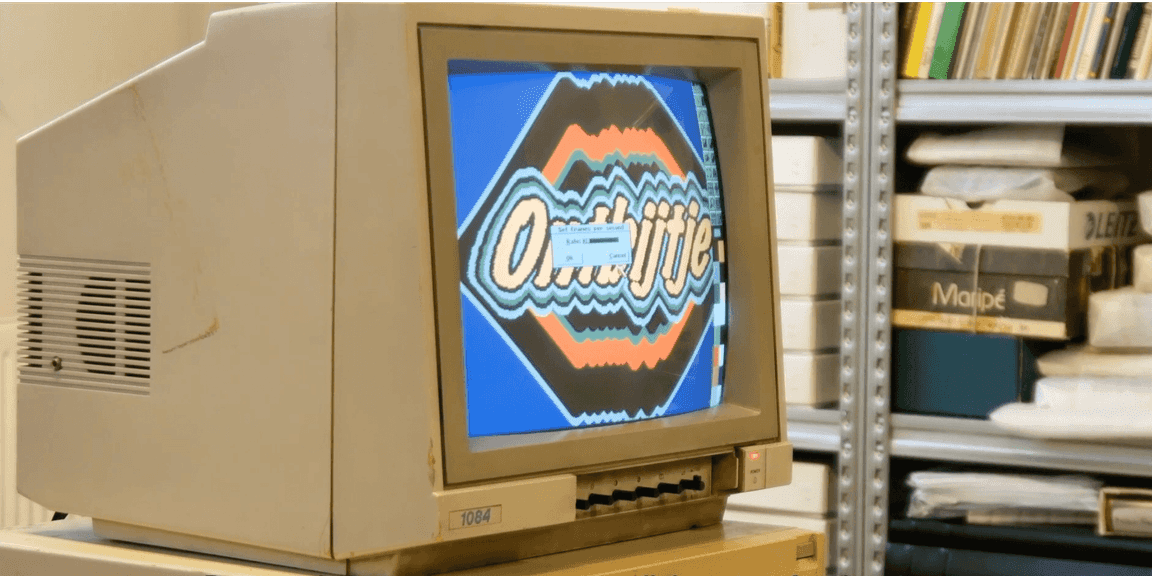
Who Cares for Amiga Artworks?
New video series launched on World Digital Preservation Day
On 6 November 2025, World Digital Preservation Day, LI-MA launches Who Cares for Amiga Artworks? – a practical how-to video series by LI-MA, created in collaboration with the Dutch Digital Heritage Network (NDE). Aimed at media art professionals, creators, conservators, and the like, this series guides you step-by-step through the process of preserving, accessing, and reformatting artworks created with the legendary Commodore Amiga computer.
Between the 1980s and 1990s, the Amiga was a groundbreaking creative tool, widely used by artists experimenting with computer graphics, animation, and sound. Today, however, its hardware and software are largely obsolete, leaving many artworks at risk of becoming inaccessible. This video series responds directly to this challenge – offering step-by-step workflows for safeguarding these works and ensuring their continued visibility and relevance.
In a series of clear, concise tutorials, Who Cares for Amiga Artworks? walks viewers through the process of:
- Converting floppy disks into digital disk image files
- Opening and navigating Amiga environments through emulation
- Identifying and working with Amiga-specific file formats
- Transforming artworks into accessible, contemporary equivalents
Each video combines technical instruction with cultural reflection, asking not only how to preserve Amiga artworks, but also why. The preservation of early digital art is both a technical and ethical question – one that connects to broader issues of media heritage, artistic intent, and the evolving relationship between art and technology.
All videos are available with English voice-over and Dutch subtitles, making the series widely accessible to the international digital preservation community.
The launch takes place during the World Digital Preservation Day event hosted by NDE, marking the public debut of the series.
Converting Your Artwork from Floppy to Disk Image File Part 1
Converting Your Artwork from Floppy to Disk Image File Part 2
Context: The AMIGA NU Project
This series builds upon insights from AMIGA NU (2024 to 2025), a research initiative by LI-MA supported by Cultuurfonds. The project explored the overlooked histories of Dutch Amiga-based digital art from the 1980s and 1990s, tracing artists, artworks, and technologies that have been underrepresented in media art archives.
The research identified key Amiga artists and works, examined preservation strategies, and engaged experts, artists, and conservators through interviews and workshops. Outcomes included:
- The creation of an Amiga Artist List, tracing the networks of computer-based artists active in the Netherlands during the 1980s and 1990s
- The development of a questionnaire and workflow tools for identifying and preserving Amiga-based artworks
- New conservation protocols based on case studies of artworks by Raul Marroquin
- Public discussions and workshops
Together, these efforts form part of LI-MA’s ongoing commitment to preserving and sharing media art heritage, ensuring that the creative experiments of past decades remain visible, comprehensible, and open to reinterpretation.
Who Cares for Amiga Artworks? invites everyone working with media art – from archivists to artists – to engage with the practical and philosophical challenges of digital preservation. By revisiting the Amiga’s legacy, the project not only saves fragile works from disappearance but also reaffirms the living nature of digital art as cultural memory in motion.
Easy Guide to Converting Amiga Animation File Format
Header and thumbnail: Still from Converting Your Artwork from Floppy to Disk Image File Part 2 How-to video.







